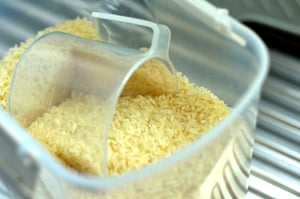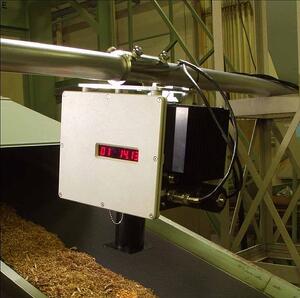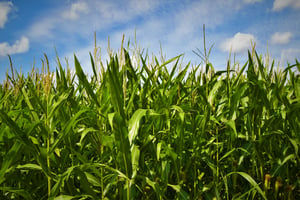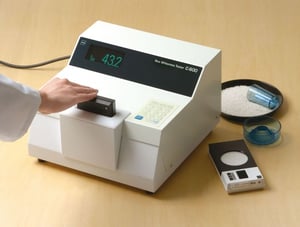In one year, 740 million tons of rice were grown and harvested across the globe, as a main source of nutrition for the majority of people on earth. Rice is an undeniable food staple globally, accounting for 42% of the human population’s total caloric consumption. And for some in poorer countries, it can account for 50% or more of daily caloric intake.
 What does this mean for growing rice? That rice should always be grown, harvested, and processed with ultimate nutritional benefits in mind. Since rice is such a global food staple, it should be carefully monitored for quality to assure the highest level of nutrition. Here’s how that can be achieved:
What does this mean for growing rice? That rice should always be grown, harvested, and processed with ultimate nutritional benefits in mind. Since rice is such a global food staple, it should be carefully monitored for quality to assure the highest level of nutrition. Here’s how that can be achieved:
Maintaining Moisture Levels
A crop’s yield relies heavily on harvesting rice at the correct moisture level. In many areas around the world, rice is harvested when the grain’s moisture level is around 25%. This is key for proper harvesting, and the health of each kernel of rice.
Premature cutting of rice keeps the grain from reaching maturity, which results in a lesser-quality product. Too much moisture, and the moisture within the grain, can cause issues during drying and processing. Too low a moisture level, and the panicles can shatter, which can lead to a loss of a considerable amount of product. It also can cause vulnerability to moisture issues and spoiling during storage.
After rice is harvested, and after it’s been threshed, it needs to dry to about 14% water content for milling and storing. Too high a moisture content, and the rice is unsafe for storing, and can actually lose nutritional value and viability. This means that not only are moisture levels key to a successful harvest and storage, but also to the nutritional benefits of the rice too.
So how can we assess the moisture levels of rice? Of course, the Riceter is perfect for field use to determine moisture levels in the paddy so that rice is harvested at its optimum level of moisture. It’s lightweight, highly portable, and runs on only two “AA” batteries.
Moisture levels can also be monitored before and after harvest with our unique single-kernel moisture meter, the, PQ520. A sample of kernels is measured and a histogram created which shows the distribution of moisture in the batch. Optimal harvest for a specific plot or paddy is when the spread of moisture values is minimized.
Milling
Most of the nutritional value of rice is based on its degree of milling. The color of rice, its whiteness, is used to determine the degree of milling. This helps evaluate the amount of bran still remaining on each grain of rice. Since bran is about 20% lipids, this helps assess the amount of lipids remaining in the rice, among other things. The milling process removes rice’s husk, bran, and germ, which increases the shelf life, but also decreases its fiber, vitamins, and minerals.
Brown rice provides more energy than white rice, as it is higher in calories, and it is also higher in protein, lipids, carbohydrates, fiber, and sugar. Since this is a vital food staple for the majority of the world, this is key to providing the highest nutritional value, which can be determined using a whiteness meter to assess the level of milling.
Rice is classified into different forms based on the degree of milling it undergoes. Whole grain brown rice also includes:
- B-Vitamins: Necessary to many of the body’s major functions
- Folate or folic acid, which helps the body form new cells and prevents many major birth defects
- Iron, which the body uses to carry oxygen through the blood
- Magnesium, which is vital to over 300 functions in the body
- Selenium, which involves the immune system and regulation of the thyroid gland
We can assess the level of milling a sample has received, and therefore get an idea of its quality and nutritional value, using an instant whiteness meter, like the C600 Rice Whiteness Tester. It can assess both brown and milled rice, as well as unwashed rice samples. This can also be tested online, with a CN-700-2 to test not just samples, but full crops as they are processed and transported.
The best way to determine the protein, moisture, and starch levels for each test sample of rice is the AN900 Rice Composition Analyzer. It uses NIR technology to receive a basic nutritional profile of the sample in under 30 seconds, with no preprocessing required.
Other Nutritional Issues
Insects can have a detrimental effect on the quality of rice. Some insects will bore into a kernel during the development of the rice, leaving a black spot on the kernel, known as a peck. These spots can also be signs of fungus, heat issues, and bacteria. Fungus present in rice can impact the appearance of the rice, but also the nutritional value as well.
A quality assurance team can inspect kernels for these visible issues, but the RN300 Rice Quality Analyzer can also check for these impurities in very little time. It classifies both brown and polished rice into normal, crushed, discolored, and other grains, providing you with a percentage breakdown by mass and category.
This is also done quickly, with sample sizes of just over 1100 pieces accurately analyzed in 24 seconds. When paired with the results of a Rice Composition Analyzer, the RN300 can provide you great detail about the quality and health of each batch of rice.
Rice isn’t just another crop: It’s a lifeline for many throughout the world. As such, we should always aim for the best, and the most nutritious. Which tools are right for you to help ensure the highest nutritional value in your crop?
Contact us today and we can help you select the best instruments to measure rice for quality and nutritional benefits.


